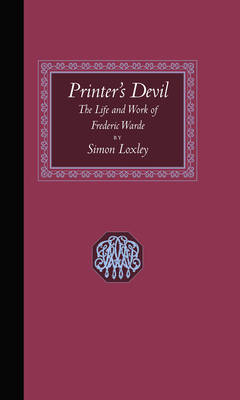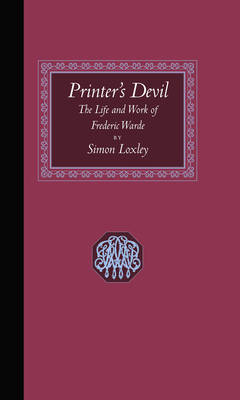
- Retrait gratuit dans votre magasin Club
- 7.000.000 titres dans notre catalogue
- Payer en toute sécurité
- Toujours un magasin près de chez vous
- Retrait gratuit dans votre magasin Club
- 7.000.0000 titres dans notre catalogue
- Payer en toute sécurité
- Toujours un magasin près de chez vous
47,45 €
+ 94 points
Description
The biography of a central figure in the final era of hot-metal composition and printing
The book and type designer Frederic Warde is remembered today chiefly for his collaboration with Stanley Morison, for producing the singular typeface Arrighi. His life was short (he died in 1939, at the age of only forty-five) but in the previous two decades he had pursued a peripatetic, rollercoaster career that saw him come into contact with most of the leading players in his field, in England, Europe, and America: Bruce Rogers, Mardersteig, Updike, Ruzicka, George Macy, William Kittredge, and, of course, Morison, are just a few of a stellar cast of characters whose lives intersected with his orbit. Until now, as it was scantily documented, Warde is the missing piece in the story of design, type, and printing in the interwar years, and this book will make essential reading for anyone interested in that critical period, one that saw the end of hot-metal and the emergence of graphic design as a distinct profession. Warde laid many false trails about his personal history, but the author has drawn upon a surprisingly large body of surviving documentation to piece together a fascinating picture of his life and of the complex, frustrating, sometimes dislikeable, but often inspiring, figure at its center. The best of Warde's extensive body of work displays a restraint and economy linked with an often striking color sense that feels thoroughly modern in its approach. This output was maintained, sometimes erratically, against the backdrop of Warde's mercurial and fragmented professional and personal life. Polarizing the opinions of those he met, he was unfailingly a prolific, entertaining, and informed letter writer, and his correspondence provides invaluable insights into his world and those around him. Here is a designer's life played out against the backdrop of the boom years of the 1920s, the challenges of the Depression, and the obstacles and opportunities created by his own remarkable, but troubled, genius.Spécifications
Parties prenantes
- Auteur(s) :
- Editeur:
Contenu
- Nombre de pages :
- 160
- Langue:
- Anglais
Caractéristiques
- EAN:
- 9781567923674
- Date de parution :
- 31-05-13
- Format:
- Livre relié
- Format numérique:
- Genaaid
- Dimensions :
- 147 mm x 231 mm
- Poids :
- 453 g

Les avis
Nous publions uniquement les avis qui respectent les conditions requises. Consultez nos conditions pour les avis.






